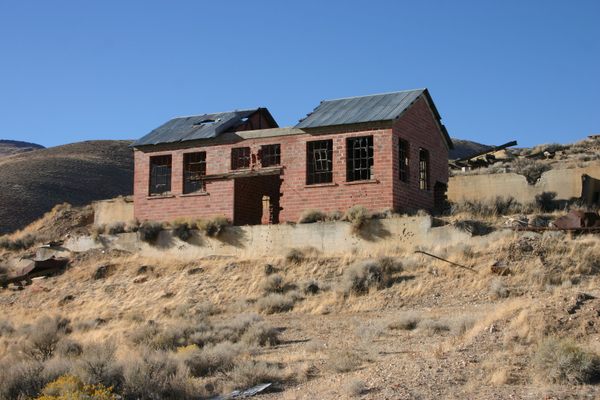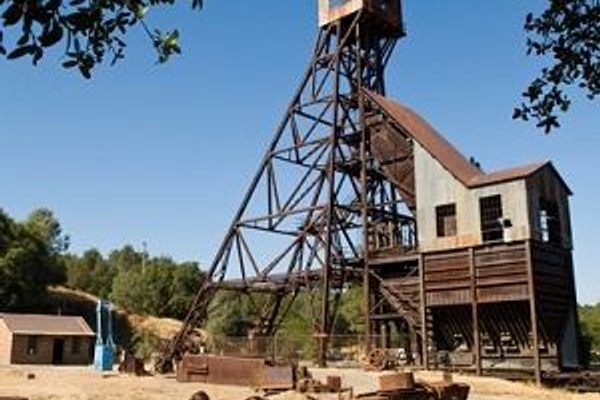Malakoff Diggins
The beauty and the beast of hydraulic mining is on full display at this California Historic State Park.
Malakoff Diggins Historic State Park is home to the remains of the country’s largest hydraulic mine, featuring gorgeous cliffs created by a quest for gold, and an abandoned boomtown once known as “Humbug.”
The North Bloomfield Mining and Gravel Co. ran the biggest mining operation in the history of the United States, centered around the mine known as Malakoff Diggins. When the precious metal was found in them-thar-hills during the Gold Rush of the early 1850s, California was a hotbed of mining companies looking for a piece of the shiny action. They found it, a lot of it, in the area around Nevada City. In order to get the gold out of the hillsides, miles and miles of canals and flumes were built to harness the power of water collected high in the Sierra Nevada Mountains by damming up lakes and rivers. The water would be let loose and sent down the flumes to create enormous pressure. Hoses would then be turned on the mountain sides in order to blast away the gravel and expose the gold. And in the process, blast away everything else in its path.
Farms in California’s Central Valley, then as now, depended on water from the Sierra Nevadas, and the dumping of mine waste into streams and rivers destroyed farmland as far as 75 miles away. This threatened the livelihood of farmers all the way to Sacramento, and fouled waterways well beyond — down to the San Francisco Bay. But this was the middle of the 19th century, and the notion of environmental disaster wasn’t on too many people’s minds. It took a forward-thinking judge named Lorenzo Sawyer to put a stop to the kind of hydraulic mining that created the cliffs at Malakoff Diggins. Until then, this sort of destructive blasting wasn’t considered for the scarring it caused the land, nor how the pollution of the leached waste affected farmland and potable water. Sure the colors of the exposed cliffs are lovely to look at now, but less so when you consider that it’s taken well over a hundred years to reclaim the natural environment.
Today, the cliffs serve as a reminder of one of the biggest environmental disasters in American history, triggering the first Environmental Protection Legislation after Judge Sawyer’s decision to shut down hydraulic mining once and for all. The old Gold Rush boomtown once known as Humbug is preserved here too, as a quiet reminder of an appetite for gold left unchecked. Humbug indeed.
Know Before You Go
The Park is 26 miles from Nevada City – take Hwy 49 north for 11 miles toward Downieville (North Bloomfield Road is not recommended). Turn right on Tyler Foote Rd and follow the main paved road to the Park. The road changes names a few times (Cruzon Grade Rd, Back Bone Rd, Derbec Rd, North Bloomfield Rd), but you will stay on paved roads all the way to the park. But go slow - these are not high-speed roads





















Follow us on Twitter to get the latest on the world's hidden wonders.
Like us on Facebook to get the latest on the world's hidden wonders.
Follow us on Twitter Like us on Facebook